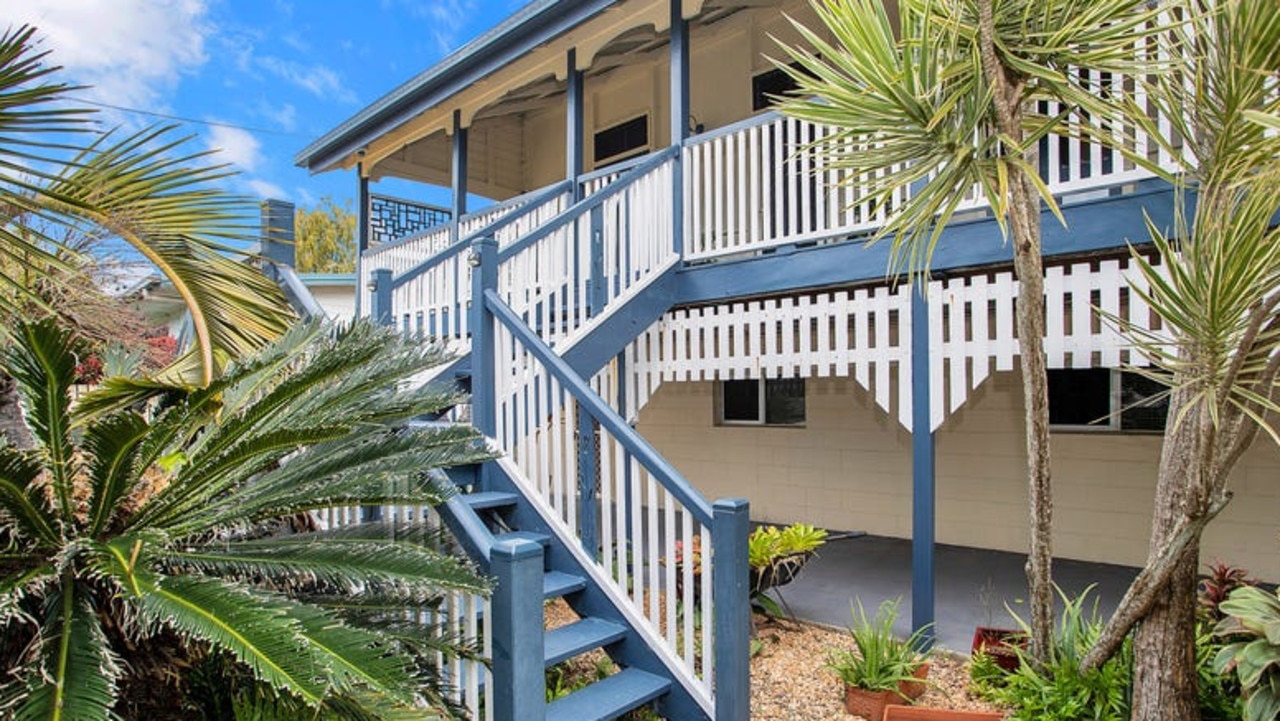Bakers Creek Wartime Air Crash remembered 80 years on
At the time, it was the world’s worst aviation disaster and a military secret kept from the newspapers. All but one of the 41 on board died after the plane they took off in off Mackay plummeted to the ground. SPECIAL REPORT
Mackay
Don't miss out on the headlines from Mackay. Followed categories will be added to My News.
At the time, it was the world’s worst aviation disaster and a military secret kept from the newspapers.
All but one of the 41 died after the plane they took off in off Mackay fell out of the sky.
Only the crew were wearing seatbelts. The rest were left to brace against one another as the fiery wreck fell to the ground.
The plane they were in was doomed from the start. A senior pilot refused to fly it on that fateful morning.
But another took it into the air before it crashed.
Eighty years on we take a look at Australia’s worst aviation disaster and the man who survived it.
PARADISE FOR US SOLIDERS
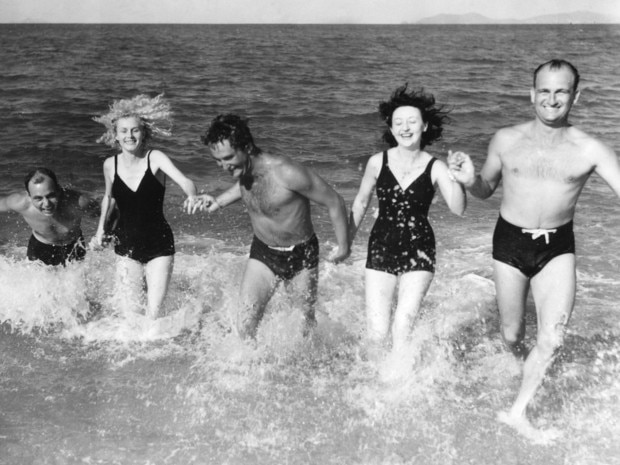
Just hours away from the death and destruction of World War II, US soldiers found a temporary paradise of sun, sand and beautiful women in Queensland.
About 100 American servicemen flew in and out of Mackay each day for 10 days of rest and recuperation from fighting in the southwest Pacific.
Entertaining the troops was an exciting honour for the young women and families left behind in the Sugar City as their husbands, brothers and sons enlisted for war.
The American Red Cross had taken over a two-storey pub in the city as a billet for weary men, ordering in fresh milk from the Eungella dairies, causing shortages for the rest of the district.
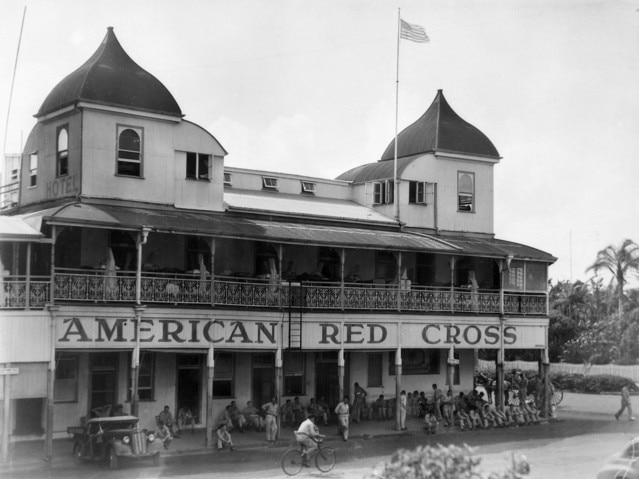
Despite tightening food rations, locals opened their homes for parties with the Americans as their guests of honour.
Several hundred young women volunteered as Air Force Victorettes to entertain US soldiers with dancing, skating, and games of baseball.
Frolicking on the beach, visits to the zoo, and rides on the cane trains, the town ensured its allies spent their days living life to the fullest.
So when 35 soldiers were due to return to the war-torn jungles of Papua New Guinea in the early hours of June 14, 1943, it’s hardly surprising none were disappointed heavy fog had grounded their plane.
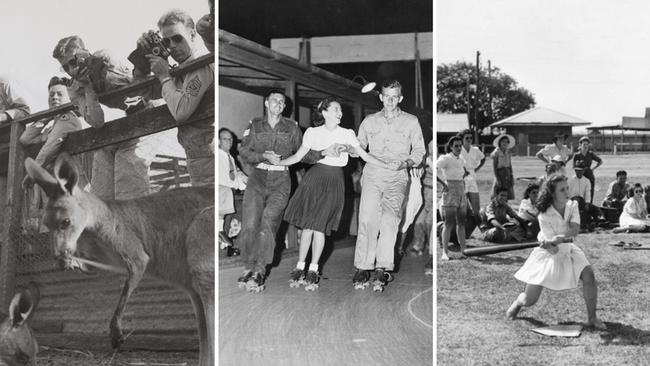
But it was a plane that would soon become their tomb.
THE PLANE KNOWN FOR NEEDING FIXES
The Boeing B-17C Flying Fortress, the only one left in the southwest Pacific, was worse for wear following skirmishes with the Japanese over the Philippines.
In fact, the converted bomber was nicknamed EMF or Miss Every Mornin’ Fixin-It.
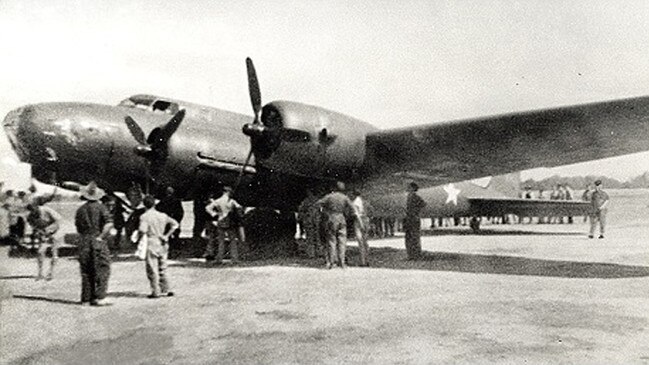
The very day before those 35 soldiers were headed back to Port Moresby, harried mechanics had replaced the plane’s two engines and a fuel tank, conducting a five-hour test flight without incident.
As the fog lifted at 6am on June 14, the men huddled in the plane and sat on the floor as six crew took the few places with seatbelts.
Just after takeoff, the plane turned at low altitude when something went terribly wrong.
Soldiers must have braced against each other, as the Flying Fortress began to fall out of the sky.
Flames licked across the fuselage and across the wings as it plummeted towards Bakers Creek and struck a mangrove forest 8km south of Mackay, where an abattoir is today.
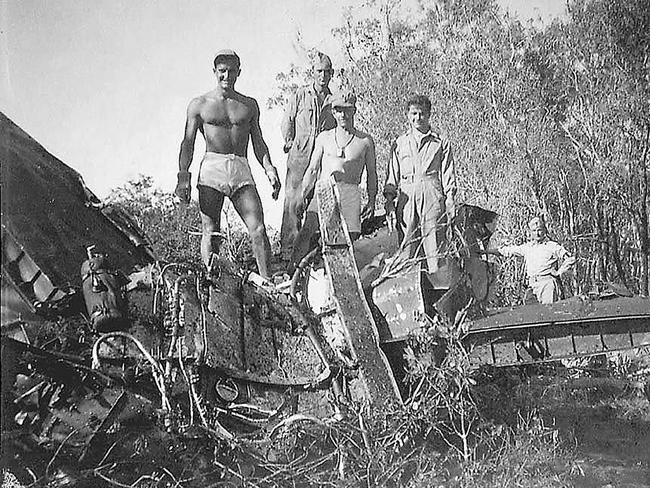
All but one of the 41 on board died in the fiery wreck, making it Australia’s deadliest aviation disaster and, at the time, the world’s worst.
NO WORD OF THE CATASTROPHE
Yet no headlines, no word of the catastrophe could be found in the papers as wartime censorship buried the truth and muzzled international media coverage.
Then-editor of the Daily Mercury Rod Manning conveyed the region’s condolences to its US allies in a story named ‘We share their grief’ the following day.
However the article could not mention the air crash, instead extending “in deepest feeling the sympathy of the community” for a vaguely defined loss.
“Young men who spent their recreation here, and were adopted into the homes and the hearts of our people, leave an aching void by their passing,” Mr Manning wrote.
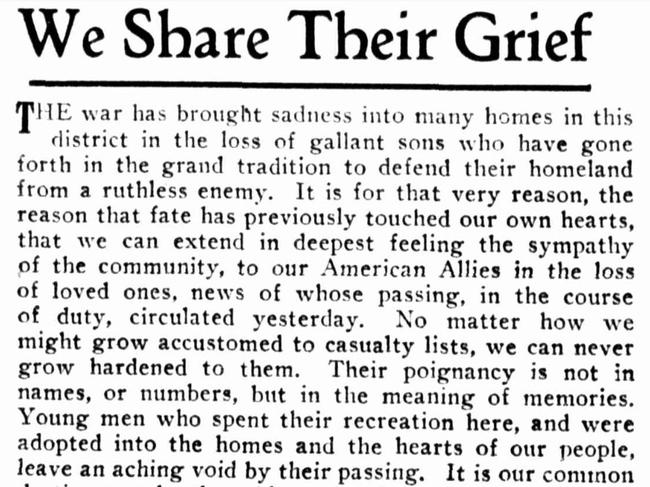
The US War Department sent the victims’ families a telegram with little information other than their loved ones had been killed in an air crash in the Pacific.
THE SOLE SURVIVOR
The soldiers’ families as well as the Australian public were in the dark for decades, and only a scant few knew the real scale of the disaster.
One was Mackay teenager and nurse Myrtle Friend (nee Findlay), who treated the sole survivor, Corporal Foye Kenneth Roberts, 19, alone in the hospital while his comrade’s bodies were retrieved.
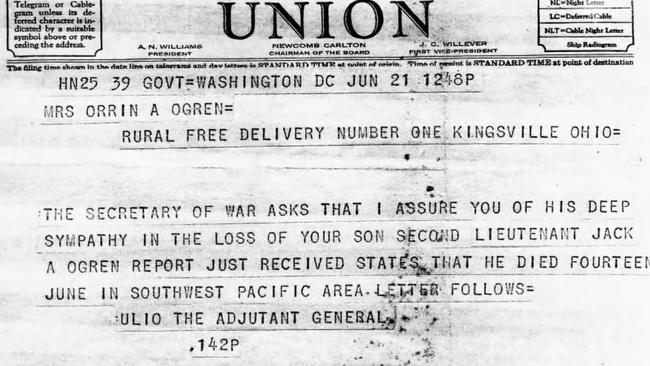
“I can still picture the bed he was lying in, this quiet boy and how tragic it was,” Mrs Friend said in 2014.
She recalled an older, more experienced pilot had refused to fly on the day of the crash, with a younger pilot taking his place.
Another witness was Percy Webb, then 16, who saw the plane backfire on the runway before it went down and pedalled his bike as fast as he could to the crash site.

Seventy years on, he told a UK film crew he was “very, very sorry” when thinking of the lives lost that day.
The US military declassified details of the incident in 1958, yet the full story only came together more than half a century later.
A SHOCKING PERSONAL CONNECTION
American Professor Robert Cutler arrived in Australia in 1999 to research the Bakers Creek crash after discovering a shocking personal connection.

His father Captain Samuel Cutler had been commander of the US rest area in Mackay and kept a daily diary, its entry from the day of the disaster revealing he had lined up the 35 soldiers and closed the doors of the doomed aircraft.
“What a day and a TRAGIC one,” Captain Cutler wrote.
“At 6.02am, two minutes after I turned my back [the plane] crashed into some woods five miles away and exploded killing 40 people, with only one saved.
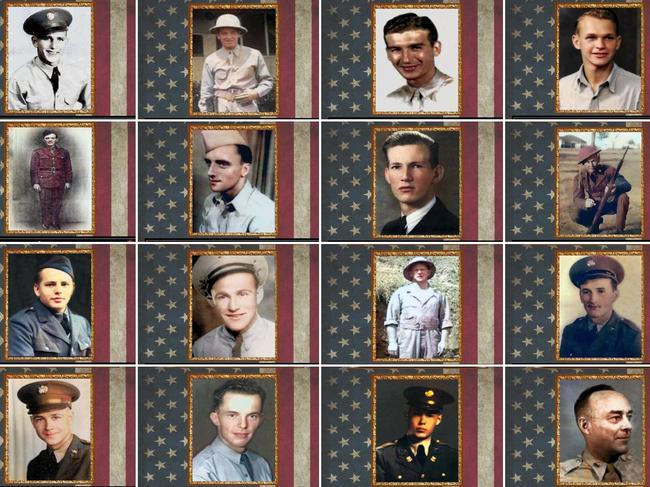
‘SAW THE MANGLED BODIES’
“Biggest air crash in American air transport history, to date.
“I put the men on the ship and so had a direct part in sealing their fate.
“Also I was at the scene of the crash.
“Saw the mangled bodies, killed while flying at 200 miles per hour.
“Terrible.”
Professor Cutler said his father never spoke of the incident to his family, saying he was “very much haunted”.
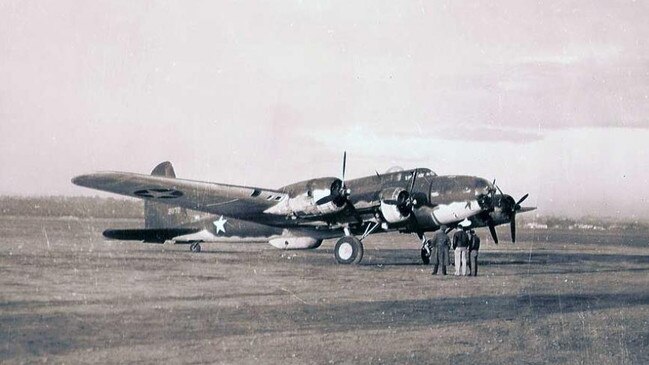
‘DON’T SIT IN THE FRONT OF A PLANE’
“He told me he witnessed a terrible thing, and he said, ‘Don’t sit in the front of an airplane’,” Professor Cutler said.
“The survivor sat in the rear of the airplane.”
Corporal Roberts, a Texan aircraft change specialist, told investigators he recalled little of the crash, remembering only saying a prayer as the plane lost altitude and then stumbling out of the wreckage.
He had been quartered in the remote end of the tail space, which had broken off as the plane crashed.
He continued to serve in the war, surviving to return home and pass away in 2004 at the age of 82.
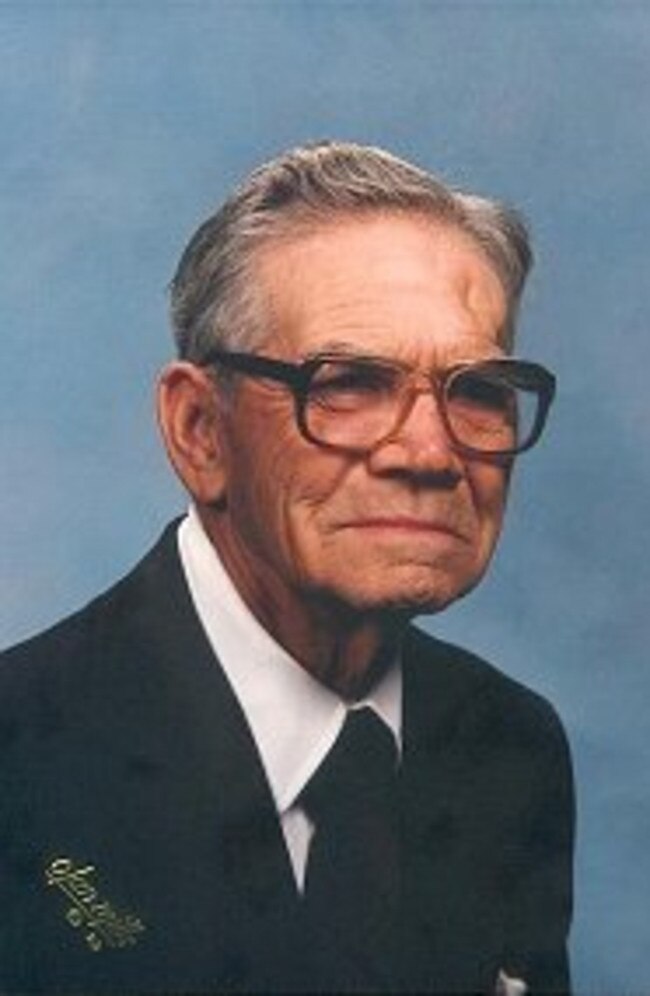
Later investigations revealed the true condition of the bomber was far worse than its doomed passengers ever knew.
PLANE HAD ABOUT 1100 BULLET HOLES
Bombing missions had caused structural damage overtime, with Miss EMF returning from Mindanao in 1941 with about 1100 bullet holes.
A former maintenance chief said by 1943, for every eight hours the plane flew, it needed at least 12 hours of maintenance.
Despite these revelations, the cause of the Bakers Creek crash remains a mystery.
Professor Cutler went on to write a book, ‘Australia’s Worst Aviation Disaster’, with the help of Mr Manning, reporter Terry Hayes, and local historian and Mackay RSL Sub-branch senior vice president Col Benson.
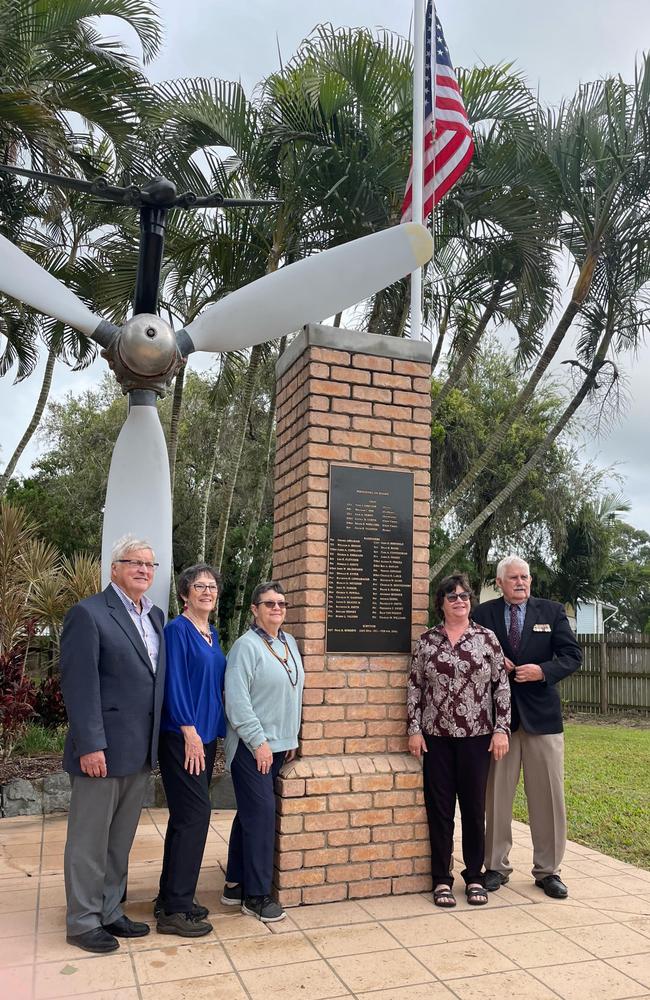
A Mackay RSL Sub-Branch senior vice president, RSLA life member and Vietnam veteran, Mr Benson was crucial in forming the Bakers Creek Association to campaign for a memorial.
“When I set out to write the Bakers Creek story, I was inspired by these people and by the realisation that my job was to tell the story in America, despite its gaps and omissions,” Professor Cutler wrote.
“I wanted this book to be my gift to them, an expression of admiration and gratitude for what their families suffered and endured for nearly 60 years.”

The first official recognition of the crash was finally unveiled in 1992, largely thanks to the tireless work and research of the Bakers Creek Association.
Major George Newell Powell was one of the men who died in the crash, and decades later three of his descendants visited Mackay to commemorate the 80th anniversary of the Bakers Creek Wartime Aircraft Crash and to honour their grandfather.
Sisters Margo Powell, Deb Amazi, and Jennifer Prasek shared memories of their late grandmother, who died without knowing what really happened to her husband in Australia.

They presented gifts at Jubilee Community Centre and shared their heartfelt thanks to the people of Mackay for remembering the US soldiers and discovering the true story of the Bakers Creek crash.
“It was almost a miracle that we found out about this,” Margo Powell said.
“We used to say, ‘Grandpa died in the South Pacific’, the sentence ended and started there and that’s all we ever knew.
“I’m just so impressed with the effort, the tremendous effort … that everybody has put into this.
“It means the world to me.”




